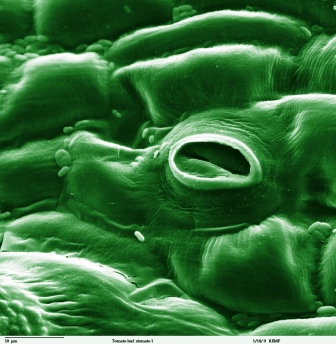What Can a Plant See?
Psalm 148:7a,9
“Praise the LORD from the earth…mountains and all hills; fruitful trees and all cedars…”
If a plant could see, what would it look at? Amazed scientists have learned that plants can indeed see and react to their environments just as do animals!
 Plants need light for photosynthesis. They grow toward the light. However, this isn’t what scientists are referring to when they talk about plant sight. They have discovered that plants have an additional system that allows them to react to their surroundings. Plants have pores, called stomata. Stomata allow carbon dioxide into the plant and oxygen out as photosynthesis takes place. They remain closed when there is little light or when water must be conserved. The more the stomata open, the faster photosynthesis takes place and the faster the plants grow. The plant also loses water faster when the stomata are open wide.
Plants need light for photosynthesis. They grow toward the light. However, this isn’t what scientists are referring to when they talk about plant sight. They have discovered that plants have an additional system that allows them to react to their surroundings. Plants have pores, called stomata. Stomata allow carbon dioxide into the plant and oxygen out as photosynthesis takes place. They remain closed when there is little light or when water must be conserved. The more the stomata open, the faster photosynthesis takes place and the faster the plants grow. The plant also loses water faster when the stomata are open wide.
While both blue and red light are used for photosynthesis, scientists have found that the cells that open and close the stomata respond only to blue light. The amount of blue light present turns on a pump in the cells that causes them to swell, and the stomata opens. This amazing process involves pumping protons to create electricity. In one experiment, scientists more than doubled the growth rate of orchids by providing extra blue light to open the stomata.
In the plants’ ability to sense and react to their environment, we see another way that plants give glory to their Creator and show that they are not simple living things that just happened to develop.
Prayer:
I thank You, Lord, that everywhere we look in the creation we see Your glory. Help me put words to this witness so that those who don’t yet know the forgiveness of sins that’s available through You may hear Your Word and believe. Amen.
Notes:
Miller, Julie Ann. 1985. “Plant ‘sight’ from pores and pumps.” Science News, Nov. 30. p. 341. Photo: Stoma in a tomato leaf. (PD)